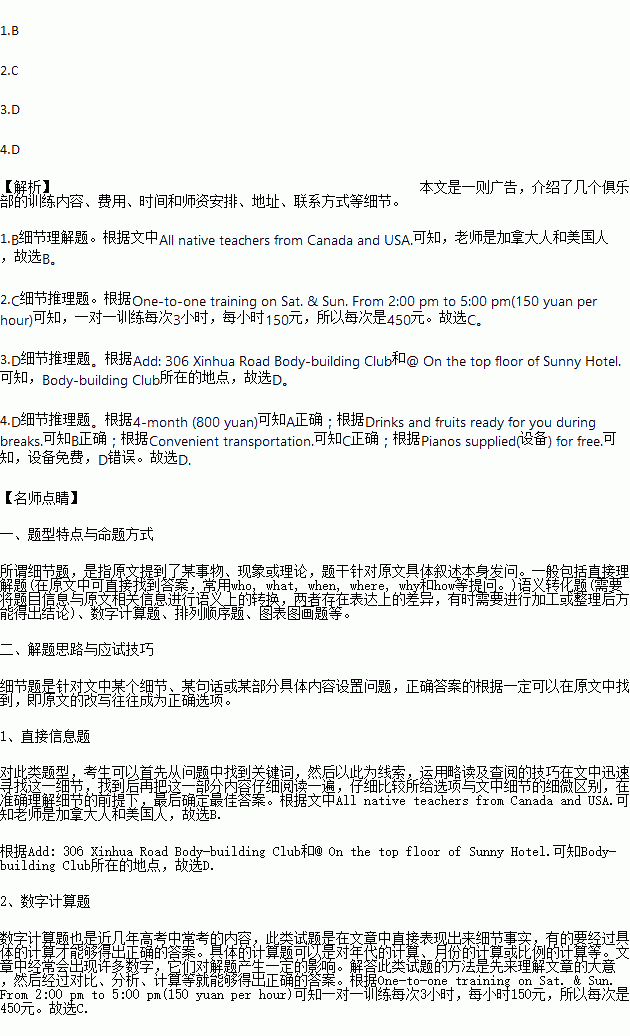题目内容
Global English Club
@ English training in four skills: listening, speaking, reading, and writing.
@ 4-month (800 yuan), 6-month (1,400 yuan) and one year (2,500 yuan) course.
@ Choice of morning or evening classes, 3 hours per day, Mon.—Fri.
@ All native teachers from Canada and USA.
@ Tel: 8872806 Add: 306 Xinhua Road
Body-building Club
@ On the top floor of Sunny Hotel.
@ Every evening from 6:00 to 9:00, Mon. —Sun.
@ Drinks and fruits ready for you during breaks.
@ Tel: 6353188
@ Add: 369 Dunhuang Road
Piano Club
@ One-to-one training on Sat. & Sun. From 2:00 pm to 5:00 pm(150 yuan per hour)
@ Experienced teachers.
@ Pianos supplied(设备) for free.
@ Convenient transportation.
@ Tel: 8756038
@ Add: 808 Park Road
1.In English training class you will have _____teachers.
A. French B. Canadian C. Chinese D. Italian
2.How much do you need to pay for one-to-one piano training every time?
A. 300 yuan B. 150 yuan C. 450 yuan D. 800 yuan
3.If Jim is exercising in the Body-building Club, where can you find him?
A. 306 Xinhua Road. B. 808 Park Road.
C. 696 Dunhuang Road. D. On the highest floor of Sunny Hotel.
4.Which of the following is NOT TRUE according to the advertisement above?
A. You have to pay 800 yuan for 4-month English training.
B. You can enjoy drinks and fruits after body-building exercises.
C. It is very convenient to get to the Piano Club.
D. You have to pay more for using the piano supplied in the class.
 天天向上一本好卷系列答案
天天向上一本好卷系列答案 小学生10分钟应用题系列答案
小学生10分钟应用题系列答案
